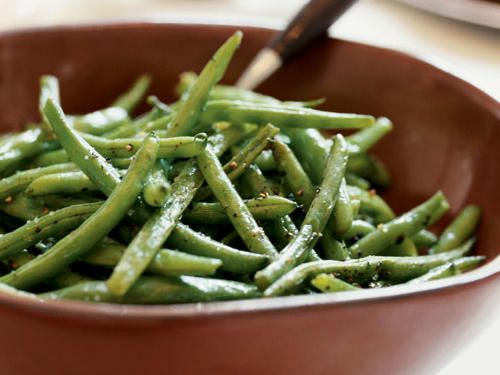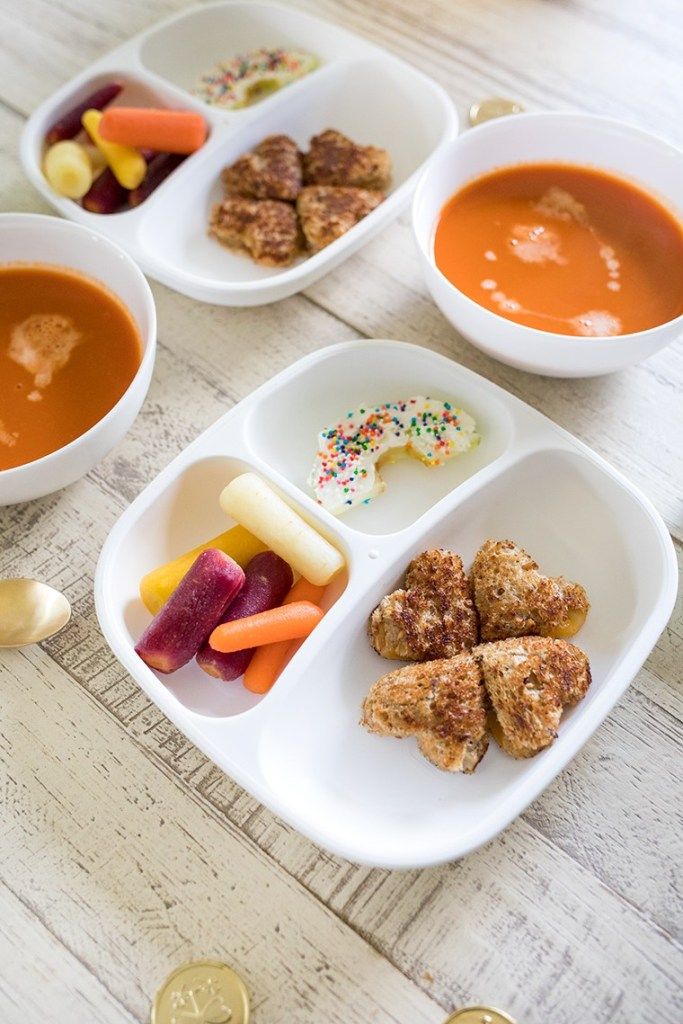Best finger foods for baby with no teeth
List of 15 Yummy Finger Foods for Baby with No Teeth
For many parents, feeding their babies is a herculean task. However, as the babies grow up, they like trying out new tastes and textures. No longer will they prefer only mashed food and purees. This is when finger foods should be introduced to your baby. Finger foods for babies do more than just providing nutrition. They help babies work on their fine motor skills too. Wondering which finger foods you could feed your child? Read on to know 15 healthy finger foods that your baby can enjoy even if he doesn’t have teeth yet.
Video : 5 Delicious Finger Food Ideas for Babies With No Teeth
15 Healthy Finger Foods for a Baby Without Teeth
Introducing finger foods to your baby can be a bit of a challenge for parents. They need to be ready for all the mess, allergies or even choking hazards once your baby starts eating finger food. So, does that mean finger foods are not ideal for babies without any teeth? No, finger foods are ideal for babies without teeth if they can pick them up easily and mash them between the gums.
If you are wondering which finger foods you can prepare for your little one, we have you covered. Below are some finger food ideas for babies without teeth. These can be alternated with the other food ideas you have to provide a nutritious snack to you little one every day. Do not miss out on providing your baby calcium-rich foods either, to help his bones become stronger.
1. Pasta
Pasta can be the first finger food for babies with no teeth since it has a very subtle taste. Pasta, when overcooked tends to get very soft, making it easy for babies without teeth to eat it.
Ingredients:
- Penne pasta/ shell-shaped pasta
- Olive oil/ butter
- Tomato puree
How to Make:
- Boil water and cook the pasta till it is soft and mushy.

- In a pan, put a little butter or olive oil and add the cooked pasta. Stir for a minute and then add the tomato puree.
- Let the pasta cool before you serve it to your baby.
2. Homemade Baby Biscuits
Homemade baby biscuits are a great snack for babies 8 months and above. The recipe is for 18-20 biscuits approximately. You may increase the measure to the ingredients if you’d like to make extra biscuits. Also, remember to skip the ingredients your baby is allergic to.
Ingredients:
- ¼ cup ground oats
- ½ cup butter/peanut butter
- 2 tbsp ground flax seeds
- 1 cup chickpea flour
- 1/3 cup maple syrup or honey
- 1 banana (mashed)
- 1 tsp baking soda
- 2 tsp vanilla essence
- 1–2 tbsp water (if required)
How to Make:
- Take a cup of chickpea flour and keep it in the freezer for about half an hour (this will help in creating the right consistency and texture for baking).

- Meanwhile, mix the butter, honey/maple syrup, mashed banana, vanilla essence and baking soda together.
- In another bowl, take the chickpea flour.
- Add the ground oats and ground flax seeds.
- Now using your hands, mix it together till you get a cookie dough-like texture.
- Make small balls with the dough and keep them aside.
- Take a baking tray and lay a butter paper on it.
- Flatten the cookie dough balls on the butter paper.
- Bake the cookies for approximately 12 minutes in a preheated oven at 350 degrees Fahrenheit or 175 degree Celsius.
- After 12 minutes, take them out and gently press on the centre of each biscuit with a fork to get rid of air pockets.
- Give one of the cookies to your baby only after it has completely cooled down.
3. Baby Quiche Cakes
Baby quiche cakes are a good way to feed some extra vegetables to your baby. These cakes can be made in batches and stored for about 3 days in the fridge if you keep them in an airtight container.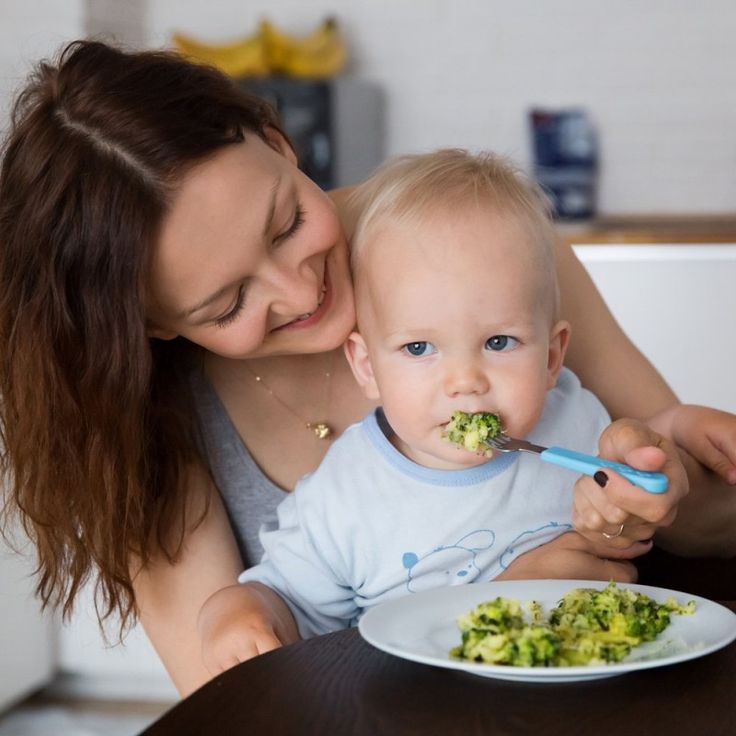 Let’s find out how they are made.
Let’s find out how they are made.
Ingredients:
- 2-3 cups whole wheat flour
- 1/4th cup of olive oil
- 3-5 cups of diced/ chopped vegetables (carrot, spinach, broccoli/ cauliflower, peas, etc.)
- 4 bananas (mashed)
- 1 cup of grated cheddar cheese
- 1 ½ cups of yoghurt
- 1 tbsp baking powder
- Salt to taste (optional)
How to Make:
- First, steam the chopped/diced vegetables.
- Prepare a batter by combining the whole wheat flour, yoghurt, baking powder, beaten eggs, cheddar cheese, olive oil, and salt.
- Add the vegetables to the batter.
- Transfer the batter into a greased muffin tray.
- Bake the cakes at 180 degrees Celsius for 20 minutes or until they turn golden brown and firm.
- Once the cakes cool, you can cut or break them into smaller pieces and give some to your baby.
4. Berry Bites
This recipe requires few ingredients and is sure to make your little strawberry lover happy.
Ingredients:
- 3 bananas
- A handful of strawberries/ blueberries
- 1/4 cup milk
- 1 teaspoon of butter (for greasing the muffin tray)
How to Make:
- Mash 3 bananas in a bowl.
- Add some milk to it and mix well.
- Grease a mini muffin tray with butter.
- Put a few strawberries/blueberries in each muffin slot.
- Then, pour the milk and banana mixture.
- Bake the muffins for about 15 minutes or until the eggs are cooked.
- Once the muffins cool down, pop them out.
- You may cut in in smaller pieces before giving it to your baby to enjoy.
5. Sweet Potato Fries
Sweet potato fries are another simple recipe with just 3 ingredients. This recipe is perfect when you are pressed for time and need to give something healthy to your baby to munch on.
Ingredients:
- Sweet potatoes (medium/ large)
- 1/4th cup of olive oil
- A pinch of cinnamon powder (optional)
How to Make:
- Preheat the oven at 400 degrees Fahrenheit.

- Clean and peel the sweet potatoes.
- Cut them into thin strips.
- Put some cinnamon powder on them.
- Place the strips of sweet potato on a baking tray over some baking sheet.
- Bake for 30–45 minutes or till they are tender.
- Serve when they completely cool down.
6. Banana Pancakes
Include some goodness of bananas into your baby’s snacktime with these banana pancakes. They are easy to make, and your little one is sure to love them.
Ingredients:
- 1 cup whole wheat flour
- ½ cup milk
- Water (if required)
- 1 ripe banana
- Butter (optional)
- Honey/maple syrup (optional)
How to Make:
- Slice or mash the banana in a bowl.
- Mix the whole wheat flour and milk together.
- Add the mashed bananas into the wheat flour mix.
- You may add some water to adjust the consistency.
- Pour a ladle of the pancake mix on to a nonstick pan and cook the pancakes till they are golden brown.
 You may add some butter if required.
You may add some butter if required. - Let the pancakes cool down.
- Cut them in strips or small pieces that your baby can hold and eat.
- You may also drizzle some honey or maple syrup on the pancakes to enhance the taste.
7. Cooked Veggies
Cooked vegetables make excellent baby finger foods.
Ingredients:
- 1 sweet potato (peeled and cut into small sticks)
- 1 small carrot (peeled and cut into small sticks)
- 4-5 small florets of broccoli
How to Make:
- Steam or roast the veggies until soft and tender.
- Transfer it to a plate and let your baby enjoy.
8. Idli
Idli is a staple in many households. It is not only easy to make but is also highly nutritious for your little one. Here’s how you can make some for your baby.
Ingredients:
- 1 ½ cups of parboiled rice
- ½ cup urad dal
- Salt to taste (optional)
How to Make:
- Wash the rice and dal and soak it for 5-6 hours in separate utensils.

- Then grind the dal to make a smooth paste and grind the rice a little coarse.
- Mix the two ingredients together and add a bit of salt.
- Add some water to adjust the consistency. The batter should have a flowing consistency, not runny.
- Leave it overnight to ferment.
- After the mixture is fermented, steam it in an idli steamer.
- Cut the idli into small pieces when they cool down and give it to your baby.
9. Steamed Dosa
This is another variety of finger food your little one is sure to enjoy. Let’s check out what you need to make some steamed dosa for your baby.
Ingredients:
- 1 cup parboiled rice or dosa rice
- 1/3 cup urad dal
- Few fenugreek seeds (methi seeds)
- 1 tbsp of flattened rice (avalakki)
- Ghee (as required)
How to Make:
- Soak the rice, fenugreek seeds, and flattened rice together in one vessel; and the urad dal in another utensil.
 Soak the ingredients for at least three hours.
Soak the ingredients for at least three hours. - Grind the rice, fenugreek seeds, and flattened rice to make a fine paste.
- Then grind the urad dal to make a fine paste.
- Mix the rice and the dal mixture together.
- Add water to adjust the consistency, which should not be too thick or too thin.
- Let the batter ferment for 6-8 hours.
- To make the dosa, heat a nonstick pan.
- Put a dollop of the mixture and spread it out in a small circle on the pan.
- Add some ghee if needed and let it cook till the base becomes golden brown in colour and you see some bubbles on the top.
- When the dosa is cooked, remove it in a plate and cut it into small pieces for your baby to eat.
10. Fruit Salad
Yes, fruit salad can also be a good finger-food dish for your little one. You can add as many fruits as you want to this dish and let your baby enjoy varied tastes and textures. You may choose to skip a few fruits if you think your baby could choke on them or leave the ones he is allergic to.
You may choose to skip a few fruits if you think your baby could choke on them or leave the ones he is allergic to.
Ingredients:
- Various types of fruits, like an apple, a banana, kiwis, strawberries, etc.
- Black salt (optional)
How to Make:
- Peel and cut the fruits, small enough for the baby to chew.
- Add little black salt and give it a good mix and let your baby enjoy it.
11. Cheesy Crackers
Cheesy crackers are perfect if you want to add a little crunchy texture that sort of melts in the mouth in no time. This recipe is perfect for your baby’s snack time.
Ingredients:
- 1 cup plain flour
- 1 cup grated cheese
- 2 tbsp unsalted butter
- Water, if required
How to Make:
- Beat the butter and cheese together until it becomes soft and fluffy. It is best to use an electric blender to do this.

- Add the flour bit by bit to the beaten mixture and mix until you get a crumbly mixture.
- Add some water to make a moist dough.
- Wrap the dough in a cling film and keep it in the fridge for an hour.
- After an hour, remove the film and roll out the dough. Using small round cutters, cut out small round biscuits and prick them with a fork.
- Then, bake the crackers in a preheated oven for 15 minutes at 180 degrees Celcius (till the crackers turn golden brown).
- Let your baby munch on these crackers when they are cooled down to room temperature.
12. Zucchini Chips
This recipe is a great alternative for other unhealthy chips. Here’s what you need to make them.
Ingredients:
- 1 zucchini (cut into thin strips)
- 1 tbsp olive oil
How to Make:
- Preheat the oven to 100-110 degree Celcius.
- Drizzle some olive oil over the zucchini slices.

- Place the zucchini slices in a single layer on a baking tray.
- Bake the chips for 30 minutes, take the tray out and flip all the chips.
- Bake for another 30 minutes.
- Let the chips cool before you let your baby have some.
13. French Toast Fingers
French toast fingers can be a breakfast recipe or an evening snack. It is a delicious way to feed some milk and bread to your little one. This recipe usually has eggs in them but if your little one is under 1 year, you should avoid adding eggs. You can use corn starch instead. Here’s what you need for some french toast.
Ingredients:
- 1 tbsp corn starch
- 1-2 tbsp of milk
- 2-3 slices of whole wheat bread
- A pinch of salt (optional)
How to Make:
- Take the milk and salt in a bowl and add corn starch to it. Mix well.
- Trim down the crust from each slice of bread.
- Heat a pan on medium flame.

- Lightly grease the pan with butter.
- Dip a slice of bread in the corn starch and milk mixture.
- Remove it immediately and fry it in the pan till it turns golden brown on both sides.
- Cut the slice in 3 to 4 strips and let your baby have it when it cools down.
14. Vegetable Parathas
Vegetable parathas are a great way to feed your baby most of the vegetables he resists. Make them in smaller sizes, and you don’t have to worry about cutting them for him. Here’s what you need to make some vegetable parathas.
Ingredients:
- 1/2 cup of mashed vegetables of your choice
- 1 cup of wheat flour
- Oil/ butter
- A pinch of salt (optional)
How to Make:
- Mix the vegetable mash with wheat flour.
- Add some water and make a soft dough.
- Roll out small round flatbreads with a rolling pin.
- Heat a pan and grease it with oil/butter.

- Cook both sides of the paratha on a medium flame.
- Serve when the parathas cool down.
15. Paneer Sticks
Paneer sticks are a great way to add some protein into your baby’s snack time. Read on to know how you can make this recipe.
Ingredients:
- Paneer (cottage cheese)
- Ghee/oil
- A pinch of salt (optional)
- A pinch of turmeric (optional)
How to Make:
- Cut the paneer into long strips.
- You may marinate the strips with a pinch of salt and turmeric if you wish to.
- In a pan, put a little oil or ghee.
- Lightly sauté the paneer strips over medium heat until they turn golden brown.
- Bring the temperature down before you feed paneer sticks to your baby.
Introducing finger foods to babies is a good way to get the baby used to different types of tastes and textures.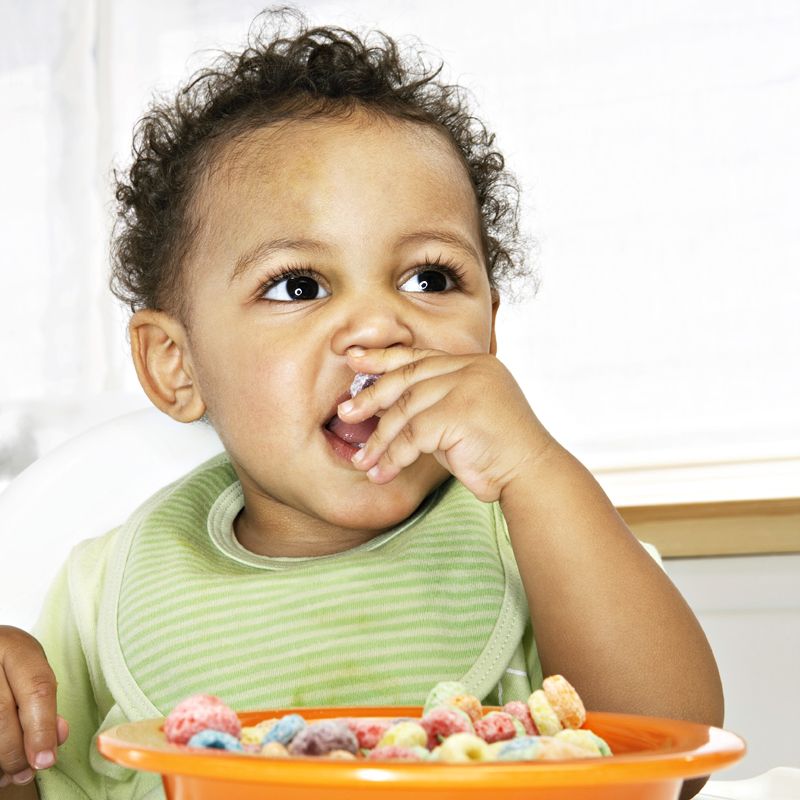 Finger foods improve the baby’s coordination skills and encourage self-feeding. With the 15 finger food recipes above, you can now explore your baby’s taste and liking.
Finger foods improve the baby’s coordination skills and encourage self-feeding. With the 15 finger food recipes above, you can now explore your baby’s taste and liking.
Also Read: 7 Solid Foods for a Baby
125 first foods for babies with no teeth
by Jo
Can you imagine eating food without any teeth? Just with your gums alone? I surely find it hard to picture, but we were once like our little ones. Toothless, like a 100 year old grandma. Luckily, there are first foods for babies with no teeth. And I found 125 of them for you to read about.
PIN IT FOR LATER
The original article was written back in 2018. This is a 2021 updated version.
Since then, I have re-written and updated this post to reflect the changes I have gone through when it came to my own beliefs/thoughts and how I word things when talking about feeding kids. As such, the remains of the original article can be seen in the comments section. Word of caution, it’s not something that makes too much sense anymore and some parts I am not very proud of. I even considered deleting the comments altogether, but that doesn’t seem just right either. Either way, I hope this article helps you, even a bit.
As such, the remains of the original article can be seen in the comments section. Word of caution, it’s not something that makes too much sense anymore and some parts I am not very proud of. I even considered deleting the comments altogether, but that doesn’t seem just right either. Either way, I hope this article helps you, even a bit.
Yes, the Pinterest pins show blueberries and they are a choking hazard, but do read the entire post. I have tried to give suggestions for each type of food so as to make them safe even for little ones.
If I missed anything, give me a shout.
But how can babies even chew without teeth?
Well, the truth is, they don’t need teeth to chew.
Chewing involves movements of the jaw, tongue and cheek. Teeth are used later on to break up more complex fibres.
This is technically done with the teeth that are more at the back of the mouth, called molars. The first molars show up somewhere between 13 and 19 months old, as you can see from the graph below.
So if we were to wait that long before we gave our little ones any food that can be easily munched on with the gums, then we would seriously endanger his or her capabilities of dealing with food (not to mention the fact that after around 8 months, the gag reflex moves further down the tongue and babies might experience a higher risk of choking if they are not accustomed to table foods yet).
Furthermore, babies are already experienced in munching away, because they would have spent a lot of time already with their fingers in their mouth, biting toys and other objects.
So encourage them to explore these with their lips, tongue and jaw, at the same time being careful of any pieces that might come off and increase the risk of choking.
So, assuming little one doesn’t have any teeth yet, what can I give him?
See the list below.
But before anything else, make sure baby meets the three signs he or she is ready to begin in the first place.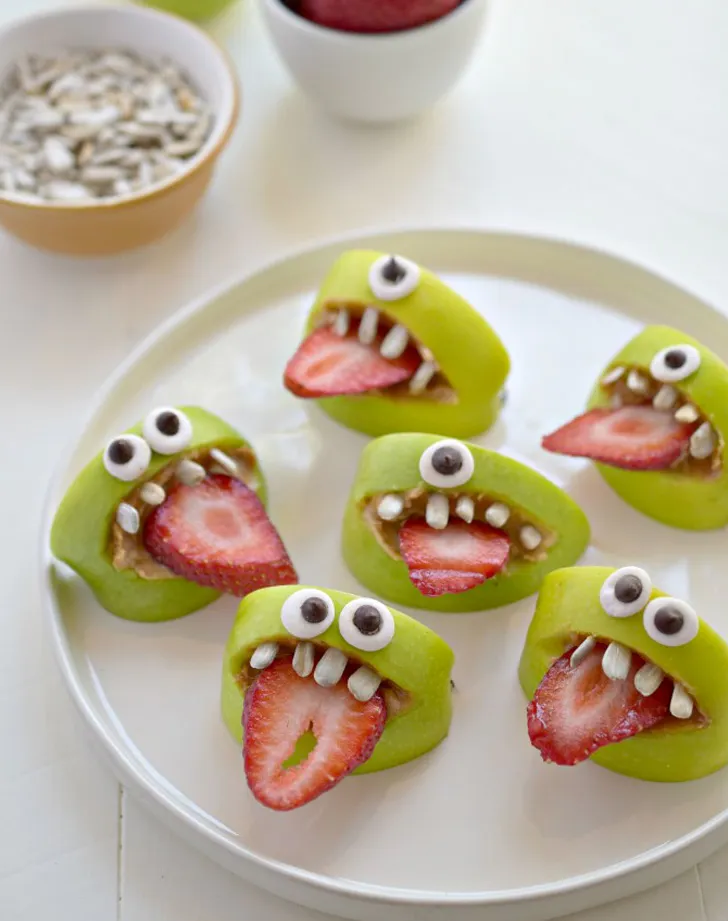 I cannot stress this enough, guys, and it will save you lots of trouble down the road.
I cannot stress this enough, guys, and it will save you lots of trouble down the road.
There was a time when the recommendations said to start solids at 4 months+ and I’m not sure that all the baby food manufacturers have come up-to-date with the current official advice regarding infant feeding. Always watch the signs in your baby and judge whether he or she is ready. This usually happens at around 6 months, give or take.
Here you go, some ideas of first foods for babies with no teeth. I also added some notes and suggestions of serving for some of them. This is regardless of the method you use, baby led weaning or traditional. At some point, you’ll have to start giving them table foods.
And because I’m a fan of food groups, I have split them accordingly, for easier reference.
Note: please be aware of choking hazards. I find this article sums up pretty well what are the foods you need to pay extra attention to. As your little one develops his ability to chew, you need to be careful, teeth or no teeth.
Fruits and veggies
As a general rule, go for the ripest you can get, in the beginning, as these are usually softer for babies just starting out.
- Avocado. Serve as is, sliced into wedges, or served on toast, mashed, with an egg on top. You can also try a guacamole recipe, which is basically adding some tomato, red onion, a bit of pepper and some lemon juice to a mashed avocado. For an easier grip, you can toss it through some breadcrumbs or ground nuts.
- Banana. Serve as is, sliced or mashed. Here is a tip on how to offer it if baby is at the beginning, doing baby led weaning and has tiny hands. Also, here’s my recipe of baby’s chocolate you can make with banana and avocado.
- Apricot. Pick a softer variety, the riper, the better. Cut into wedges or mash.
- Tomato. Try serving them as such or on top of a pizza toast (just a slice of toast, with some mozzarella and tomatoes and baked for 10 minutes in the oven). My youngest sometimes enjoys it cut wedge-style.

- Peach. Extra ripe are usually softer.
- Mango. Go for the ripe ones.
- Strawberry. Remove the hull (the leafy and usually white part on top) before giving it to baby. Halved would be best. The bigger ones even cut into 4 pieces.
- Watermelon. Melts in the mouth. Remove the seeds and only give the red parts to baby.
- Pear. Peel it and if it’s too hard, you can bake it in the oven for a while, with cinnamon on top.
- Apple. Peel and cook it in the oven, like the pear, or shred it on a grater (I used to do this in the beginning when Emma was small; the finer side of the grater also turns the apple into applesauce).
- Muskmelon.
- Honeydew melon.
- Carrot. Steam, boil or bake in the oven to make it soft. Don’t offer raw to babies just starting out.
- Cauliflower. Steam, boil or bake in the oven with some seasoning on top.
- Broccoli. Here are 10 basic techniques for cooking broccoli from scratch, explained in-depth.
 Plus, you’re getting a free cheatsheet with the 3 ingredients that make broccoli taste good.
Plus, you’re getting a free cheatsheet with the 3 ingredients that make broccoli taste good. - Potato. Boil, bake or even steam until very soft.
- Sweet potato. Cook in the same way as a normal potato.
- Pumpkin. Bake in the oven until soft.
- Zucchini. Baked or boiled until it’s soft. Also grated works really well, incorporated in baked batters.
- Beetroot. Steam or boil. Be careful, though, as it contains a high amount of nitrates and it is not ok for baby to have in big quantities or too often. If you offer a varied menu, it shouldn’t be a problem.
- Grape. Cut them in quarters lengthways. Use this if you’re short on time.
- Satsumas or easy peelers. Cut in half for safety.
- Clementines.
- Raisins. If you leave them to hydrate in water for 1 hour or so they should give up their sweetness. They are a choking hazard as per the link I shared above, so pay extra attention. Better incorporate them in baked foods.
- Blueberry.
 Smash/squish them for safety or cut them in half.
Smash/squish them for safety or cut them in half. - Blackberry. I would halve these in the beginning, as there are some quite big.
- Cucumber. I would only offer the middle part in the beginning, as it’s softer and easier to manage for babies just starting out.
- Peas. Great for improving that pincer grasp.
- Sweetcorn.
- Baked beans. Great source of iron.
- Plum.
- Kiwi.
- Dried apricots. Great source of iron, like any dried fruit, really. A bit on the sweet side, so be mindful of that.
- Cherries. Cut in half or quarters.
- Sour cherries. Serve the same as cherries.
- Pineapple.
- Orange. Cut the pieces in half or more.
- Raspberries.
- Olives. Beware of how salty they are. If left in water, they will lose their saltiness.
- Papaya.
- Dried cranberries. Same as raisins, so better incorporate them in a batter/dough.
- Parsnips. Boil, steam or bake in the oven with some seasoning on top.
 You can remove the center which is usually harder.
You can remove the center which is usually harder. - Butternut squash. Bake or steam.
- Bell pepper. Bake or boil.
- Green beans. Boil or steam.
- Chickpeas. Best boiled or turned into hummus or falafel.
- Onion. Boiled or baked.
- Turnips. Boiled until soft. You can make a veggie broth by boiling most of the hard veggies.
- Cabbage. Boiled or baked.
- Mushrooms. Make a sauce for pasta or bake them in the oven.
- Lentils. Turn them into soup or stews.
- Eggplant. Baked in the oven is your best bet.
- Asparagus. Can be a bit hard, but baby can munch away if properly cooked, like in the oven or steamed.
- Edamame. Never cooked them, but I guess either boiled or steamed.
- Kaki fruit.
- Lychee. Just make sure to peel the outer shell.
- Grapefruit. Cut each slice in three smaller pieces or more, depending on size.
- Pomelo. Cut each slice in multiple pieces.
- Lemon. My youngest loves his lemons cut into wedges and he just sucks at the pulp.

- Figs
- Passion fruit
- Yam. It’s a root vegetable and can be cooked in a similar way to a sweet potato.
- Brussel sprouts. Boiled, steamed or baked with seasoning.
- Nectarine. Go for riper ones and cut into wedges.
- Ugli fruit.
- Plantains. They look like bananas, but you have to cook them. They come from Jamaica, I believe.
Related posts
- 14 smash cake ideas – healthy, no sugar
- Blueberry galette (a recipe great for blw)
- 33 tips to easily end picky eating for good
- 5 alternatives to baby cereal that won’t break the bank + 1 tip
- Why you should not feed your baby smoothies, overnight oats, maple syrup and other foods
- Bread and butter pudding (baby friendly, also great for babies with no teeth)
Meat/poultry/fish
- Salmon. I usually bake it in the oven, wrapped loosely in baking paper or foil, for around 20 minutes.

- Cod. Cook the same way as salmon.
- Haddock.
- Mince meat. You can cook some meatballs.
- Steak. Serve in shredded strips, like the chicken.
- Chicken. Serve in shredded strips for babies to suck on and munch away later on.
- Tuna. I am guilty of buying cans of it, but if you can bake it from scratch, that’s even better. Squeeze a bit of lemon to give it some flavour.
- Crab. If your little one is not allergic to seafood, you can give it a go.
- Prawns/shrimp. Great finger food.
- Homemade sausages.
Breads/cereal
- Bread. To prevent it from sticking to the roof of the mouth, toast it. Or make some french toast.
- Rice. Great in rice puddings.
- Porridge
- Porridge fingers
- Millet. Boiled in milk or turned into a pudding (see my recipe here)
- Quinoa. Boiled and eaten as a side or added to porridge, for example.
- Amaranth.
 Same as quinoa.
Same as quinoa. - Buckwheat. Same as the above.
- Semolina pudding.
- Spaghetti
- Pasta. Macaroni, penne, fussili or bowtie shapes work well for beginners.
- Noodles
- Homemade pizza
- Polenta
- Cous-cous
- Naan bread
- Pitta bread
- Tortillas
- Rice cakes. Go for the lowest salt option.
- Shreddies. Simple, no flavor, no added salt or sugar, just 100% wholegrain. Serve in milk.
- Focaccia
- Chapatti fingers (an Indian flat bread)
Eggs (in the UK, those that have a lion stamped on the shell are salmonella-free, therefore the yolk can be left runny when cooked – otherwise please cook the yolk completely)
- Boiled eggs
- Poached eggs (only in the UK)
- Fried eggs (just don’t use oil and fry in a non-stick pan)
- Scrambled eggs
- Omlette
- My baked omlette
Dairy
- Yoghurt
- Cheddar cheese.
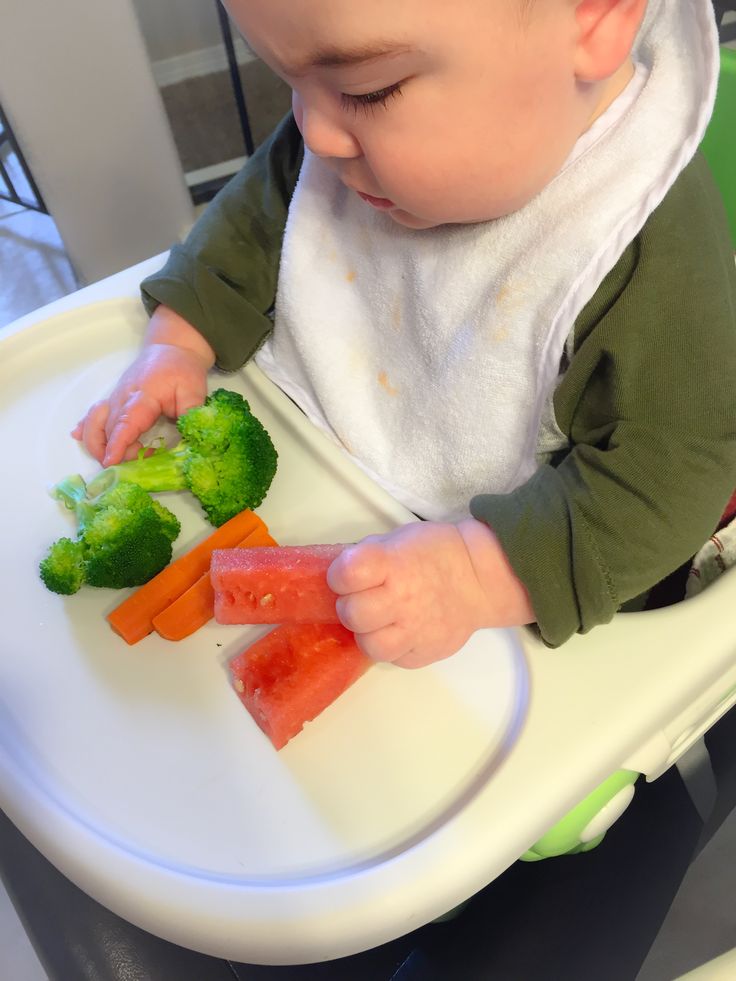 Just watch out for salt and the amount present. Grated is best at the beginning.
Just watch out for salt and the amount present. Grated is best at the beginning. - Mozarella. Choose the lowest salt option.
- Sana. It’s an Eastern European type of dairy, similar to yogurt, but slightly drinkable.
- Kefir. Similar to sana. You can find them in the European section in the supermarket.
- Curd cheese. I have a recipe for it here. It’s a no-salt version of cheese, perfect for babies.
- Cottage cheese. Just make sure the salt levels are okay.
Others
- Tofu. Just watch out for the salt content.
- Homemade muffins (try this carrot muffins recipe)
- Homemade pinwheels
- Homemade banana bread
- Homemade biscuits (easiest recipe: 100 g flour, 100 g butter and 100 g of homemade curd cheese or ricotta cheese; everything mixed and baked in the oven)
- Pancakes
- Waffles. Here’s a basic recipe to follow, which is infinitely customizable. A bit of waffle theory never hurt.

- Fritters. I have a recipe here, very adaptable to what you have in your pantry.
- Homemade nuggets
- Any homemade cake-like consistency, as long as there is no sugar, maple syrup, honey (if baby is under 1 year old), whole nuts, etc.like this baked oatmeal cake.
- Homemade popsicles or anything that’s made out of fruit and yogurt and frozen.
- Peanut butter. It is best to spread it on toast or on slices of banana. Just make sure it’s 100% nuts.
- Almond butter. Same as peanut butter.
- My apple pudding
BONUS:
126. 2 ingredient cookies. The easiest snack ever. Pair it with some dairy and you’re good to go.
127. 3 ingredient pancakes. The fluffiest and easiest pancake recipe out there. Make sure to read my notes on timing and flipping and why those are the key elements for the fluffiness.
128. Spiced biscuits. I think these are great for when little ones are teething.
129. Easy scones. With only 3 ingredients at the base, these are soft and fluffy.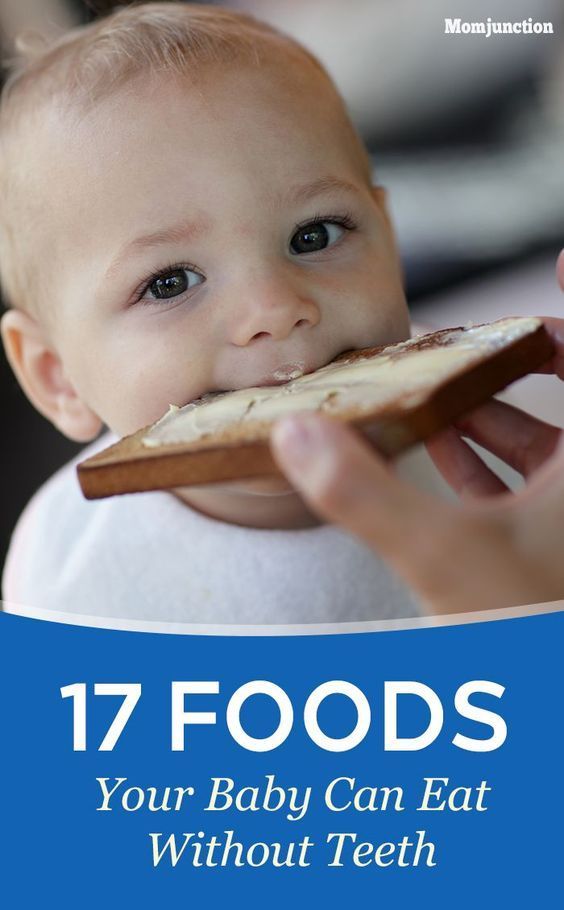 Don’t overmix the batter though.
Don’t overmix the batter though.
130. A kid friendly brownie with a secret nutritious ingredient.
You are probably thinking: is there anything she hasn’t mentioned?
In fact, I haven’t mentioned the leafy vegetables, like spinach, lettuce, salad etc because babies might have a hard time tearing them apart so as not to stick to the roof of their mouths.
I also didn’t mention pomegranate, because of its high choking risk.
What comes next?
Knowing what to feed your kids might be a little easier now that you have this list, but actually getting them to eat or at least try any food is another story entirely.
This is why I have put together a 7-part blog series about how to get your little one to eat any food. It is based on more than 3 years of feeding little tummies, observing and taking mental notes about everything I did and everything they did at mealtimes.
I think you’ll find it useful and worth reading. You can save it on Pinterest for later reading or share with someone you know.
You can save it on Pinterest for later reading or share with someone you know.
Thanks!
Ioana x
START READING HERE >>
Categories Baby food, Blog, Featured, The basics Tags baby led weaning, BLW, finger foods, first foods© 2022 WEANINGFUL • Built with GeneratePress
What children should eat for healthy teeth: simple recipes for child nutrition
Dentistry Pediatrics Proper nutrition Recipes More about children Healthy lifestyle Pregnancy and children
Children's teeth need special care and protection due to anatomical and physiological features. Tooth enamel in children is only going through the stages of mineralization and is therefore extremely vulnerable to aggressive environmental influences. Nutrition can also act as a factor of aggression. In addition, children are actively growing, and this is the most important period in terms of preventing bite pathologies, for which nutrition will also play a provocative role.
How to purify and humidify the air at home: effective tips from the experts
Tips, tricks and device selection: everything you need to improve your home atmosphere.Healthy teeth in children - what is needed for this?
In order for children's teeth to be healthy, the body must receive a sufficient amount of the main minerals for enamel - calcium, phosphorus, fluorine. Therefore, children's nutrition should contain as many products as possible, which contain these trace elements. It should be borne in mind that they cannot be fully absorbed without the presence of vitamin D.
What else is important to consider when compiling a menu for healthy teeth in children? Such a process as chewing. It is thanks to the work of the chewing muscles that the child's jaw fully grows and develops. In the absence of physical activity, in other words, when children refuse to chew or simply do not know how, bite problems are most often recorded, and crowding of teeth is far from the most difficult.
Proper nutrition of children - what products to choose from?
Recipes for healthy teeth in children consist of foods containing calcium, of which there are a lot, but they all differ in its amount. The food poppy will be the record holder for calcium content, followed by a variety of dairy products, which form the basis of nutrition in childhood. Calcium is also found in some nuts, greens - spinach, parsley, watercress, dill, green onions, etc. Cereals such as buckwheat, oatmeal, barley groats - are champions in calcium content among cereals. Also, this element can be found in fish, poultry meat, veal. Among fruits, grapes and raisins, peaches, apricots, oranges, grapefruits will become sources of calcium. And in vegetables, calcium can be found in white, red and cauliflower, radishes, potatoes.
Phosphorus, which is no less important for dental health in children, is found in many cereals - rice, oatmeal, buckwheat, corn. Phosphorus can be found in pumpkin seeds, sunflower seeds, and what children will especially appreciate, a large amount of phosphorus is found in popcorn. Among vegetables, the champions are tomatoes, garlic, potatoes, shallots, Brussels sprouts. Phosphorus is also found in fruits loved by children - apples, currants, prunes, kiwi, raspberries and much more. The source of phosphorus can be found in meat products - fish, any seafood, beef, chicken (including eggs).
Among vegetables, the champions are tomatoes, garlic, potatoes, shallots, Brussels sprouts. Phosphorus is also found in fruits loved by children - apples, currants, prunes, kiwi, raspberries and much more. The source of phosphorus can be found in meat products - fish, any seafood, beef, chicken (including eggs).
Before looking for recipes with such a set of products in cookbooks and other resources, turn on your imagination. In fact, children receive this set of products every day, and even if there are refusals, the main task of parents is to lie down the child and help him evaluate not only the benefits, but also the taste of the products, moving them from the “unloved” group to the “favorite ones”.
Recipes for healthy and strong tooth enamel in children
Nutrition of a child is unthinkable without dairy products, of course, if there are no allergic reactions. As you know, milk, its derivatives are champions in terms of calcium content, and phosphorus can be found in potatoes and onions. By combining these two sources of minerals, you can get a wonderful dish that children will certainly appreciate for its simplicity, tenderness of taste.
By combining these two sources of minerals, you can get a wonderful dish that children will certainly appreciate for its simplicity, tenderness of taste.
The recipe for potatoes stewed in cream is very simple, for cooking you will need:
- potatoes - 300 - 400 g;
- cream 20% - 450 ml;
- onion - 1 large onion;
- butter - 10 - 20 g;
- frying oil;
- water - ½ cup;
- salt to taste;
- greens.
According to the recipe, the potatoes are peeled, cut into thin bars, put on a hot frying pan with a small amount of vegetable oil. Finely chop the onion and spread it on top of the potatoes, add salt, if desired, ground pepper. Add cream, water and butter over low heat and simmer until tender, stirring occasionally. At the end, greens are added.
Recipes for healthy teeth in children are not limited to cooking only second courses, it can be fresh vegetable or fruit salads, compotes, snacks.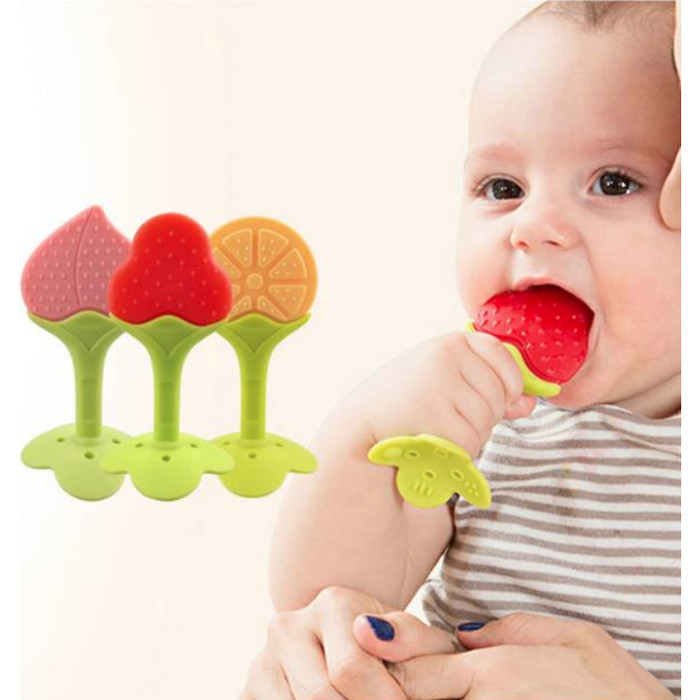 To awaken the child's appetite, dishes must be served in a bright, playful way.
To awaken the child's appetite, dishes must be served in a bright, playful way.
The best material for the implementation of fantasy will be fruits, from which you can prepare various salads. Recipes for fruit salads are so diverse that it is simply impossible to list them all, parents themselves can combine their favorite fruits with children, and use yogurt or melted ice cream as a dressing.
When preparing fish dishes, it is best to choose marine varieties and without small bones. It is best for children to offer baked fish under a cheese coat. For baking, it is best to take hard cheeses.
Children will love pasta with sea prawns, the recipe of which is simple and subject even to the busiest mothers. For cooking you will need:
- pasta 200g;
- tiger shrimps, regular 200-400g;
- tomatoes - 3 pcs.;
- garlic - 2 - 3 cloves;
- sugar and salt to taste;
- frying oil;
- greens and sesame.

At the same time, several ingredients are being cooked at once - the pasta itself and dressing for them are boiled. In a deep frying pan, shrimp are fried in a small amount of vegetable oil with the addition of a whole clove of garlic. As soon as the shrimp are fried, they are removed, and tomatoes, cut into large slices for 5, are stewed in the same oil. Teeth in children need special care and protection due to anatomical and physiological characteristics. Tooth enamel in children is only going through the stages of mineralization and is therefore extremely vulnerable to aggressive environmental influences. Nutrition can also act as a factor of aggression. In addition, children are actively growing, and this is the most important period in terms of preventing bite pathologies, for which nutrition will also play a provocative role.
Healthy teeth in children - what is needed for this?
In order for children's teeth to be healthy, the body must receive a sufficient amount of the main minerals for enamel - calcium, phosphorus, fluorine.![]() Therefore, children's nutrition should contain as many products as possible, which contain these trace elements. It should be borne in mind that they cannot be fully absorbed without the presence of vitamin D.
Therefore, children's nutrition should contain as many products as possible, which contain these trace elements. It should be borne in mind that they cannot be fully absorbed without the presence of vitamin D.
What else is important to consider when compiling a menu for healthy teeth in children? Such a process as chewing. It is thanks to the work of the chewing muscles that the child's jaw fully grows and develops. In the absence of physical activity, in other words, when children refuse to chew or simply do not know how, bite problems are most often recorded, and crowding of teeth is far from the most difficult.
Proper nutrition of children - what products to choose from?
Recipes for healthy teeth in children consist of foods containing calcium, of which there are a lot, but they all differ in its amount. The food poppy will be the record holder for calcium content, followed by a variety of dairy products, which form the basis of nutrition in childhood. Calcium is also found in some nuts, greens - spinach, parsley, watercress, dill, green onions, etc. Cereals such as buckwheat, oatmeal, barley groats - are champions in calcium content among cereals. Also, this element can be found in fish, poultry meat, veal. Among fruits, grapes and raisins, peaches, apricots, oranges, grapefruits will become sources of calcium. And in vegetables, calcium can be found in white, red and cauliflower, radishes, potatoes.
Calcium is also found in some nuts, greens - spinach, parsley, watercress, dill, green onions, etc. Cereals such as buckwheat, oatmeal, barley groats - are champions in calcium content among cereals. Also, this element can be found in fish, poultry meat, veal. Among fruits, grapes and raisins, peaches, apricots, oranges, grapefruits will become sources of calcium. And in vegetables, calcium can be found in white, red and cauliflower, radishes, potatoes.
Phosphorus, which is no less important for dental health in children, is found in many cereals - rice, oatmeal, buckwheat, corn. Phosphorus can be found in pumpkin seeds, sunflower seeds, and what children will especially appreciate, a large amount of phosphorus is found in popcorn. Among vegetables, the champions are tomatoes, garlic, potatoes, shallots, Brussels sprouts. Phosphorus is also found in fruits loved by children - apples, currants, prunes, kiwi, raspberries and much more. The source of phosphorus can be found in meat products - fish, any seafood, beef, chicken (including eggs).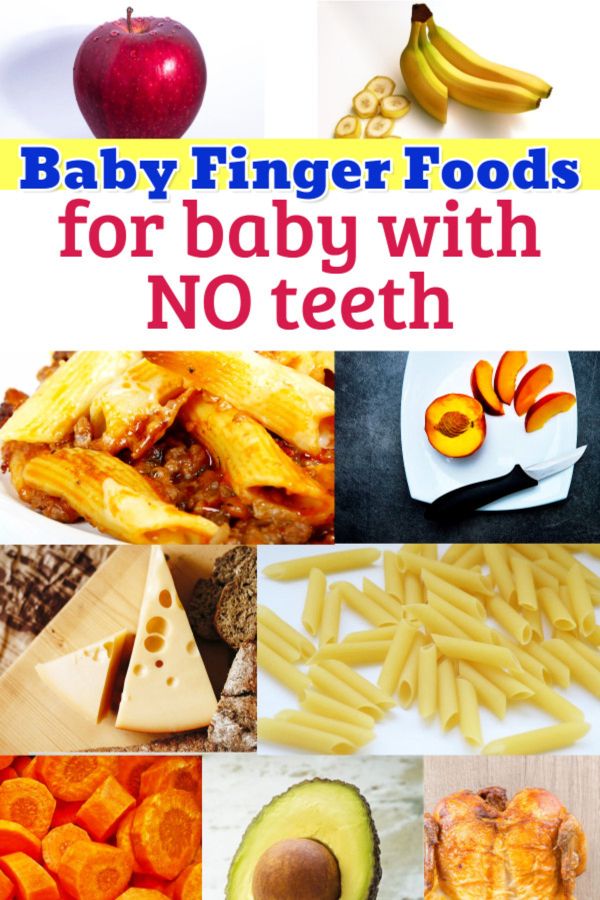
Before looking for recipes with such a set of products in cookbooks and other resources, turn on your imagination. In fact, children receive this set of products every day, and even if there are refusals, the main task of parents is to lie down the child and help him evaluate not only the benefits, but also the taste of the products, moving them from the “unloved” group to the “favorite ones”.
Recipes for healthy and strong tooth enamel in children
Nutrition of a child is unthinkable without dairy products, of course, if there are no allergic reactions. As you know, milk, its derivatives are champions in terms of calcium content, and phosphorus can be found in potatoes and onions. By combining these two sources of minerals, you can get a wonderful dish that children will certainly appreciate for its simplicity, tenderness of taste.
The recipe for potatoes stewed in cream is very simple, for cooking you will need:
- potatoes - 300 - 400 g;
- cream 20% - 450 ml;
- onion - 1 large onion;
- butter - 10 - 20 g;
- frying oil;
- water - ½ cup;
- salt to taste;
- greens.

According to the recipe, the potatoes are peeled, cut into thin bars, put on a hot frying pan with a small amount of vegetable oil. Finely chop the onion and spread it on top of the potatoes, add salt, if desired, ground pepper. Add cream, water and butter over low heat and simmer until tender, stirring occasionally. At the end, greens are added.
Recipes for healthy teeth in children are not limited to cooking only second courses, it can be fresh vegetable or fruit salads, compotes, snacks. To awaken the child's appetite, dishes must be served in a bright, playful way.
The best material for the implementation of fantasy will be fruits, from which you can prepare various salads. The recipes for fruit salads are so diverse that it is simply impossible to list them all, parents can combine fruits loved by children themselves, and use yogurt or melted ice cream as a dressing.
When preparing fish dishes, it is best to choose marine varieties and without small bones. For children, it is best to offer baked fish, under a cheese coat. For baking, it is best to take hard cheeses.
For children, it is best to offer baked fish, under a cheese coat. For baking, it is best to take hard cheeses.
Children will love pasta with sea prawns, the recipe of which is simple and subject even to the busiest mothers. For cooking you will need:
- pasta 200g;
- tiger shrimps, regular 200-400g;
- tomatoes - 3 pcs.;
- garlic - 2 - 3 cloves;
- sugar and salt to taste;
- frying oil;
- greens and sesame.
At the same time, several ingredients are being cooked at once - the pasta itself and dressing for them are boiled. In a deep frying pan, shrimp are fried in a small amount of vegetable oil with the addition of a whole clove of garlic. As soon as the shrimp are fried, they are removed, and tomatoes, cut into large slices, are stewed in the same oil for 5-7 minutes. Garlic, salt and sugar to taste, greens are added to the tomatoes.
The cooked pasta is thrown into a colander and added to the dressing, stewed together for a minute so that the pasta is saturated with juices, and the shrimp and sesame seeds are added to the plate just before you sit down at the table.
Proper nutrition as prevention of malocclusion in children
Children's teeth are far from the only thing you need to pay attention to. The bite also needs to be fully developed, and nutrition can be a stimulus for jaw growth. As soon as the child has learned to chew, and he should master the full skill by the age of 3, when all the milk teeth have completely erupted, as many hard, hard foods as possible should appear in his diet, requiring thorough chewing.
These products include boiled beef, fresh vegetables, such as carrots. From the diet, it is worth gradually excluding mashed potatoes, meatballs, and other dishes that practically do not require chewing. The optimal load on the jaws is the key to the full growth and development of the child and the formation of the correct bite.
150 dishes with step by step photos
Recipes according to GOST for children in kindergarten from 1 to 7 years. Proven recipes with step by step photos, calories and cooking time. Breakfasts for children, lunches, dinners
Breakfasts for children, lunches, dinners
Children are often reluctant to eat in kindergarten. The food is unusual, not homemade, “strange”.
But it often happens the other way around: “I want it to be like in a kindergarten!”. If this is your case, then this collection of kindergarten-style recipes is perfect for you and your child. Read more
Quince has a pleasant aroma and delicate fruity taste, and can be used to make a variety of dishes, including delicious desserts.
With or without apples, with jam or sour cream, these pancakes are good for everyone.
Sauerkraut soup like in kindergarten is recommended for older children.
Kindergarten-style cheese omelette is a wonderful breakfast for the whole family.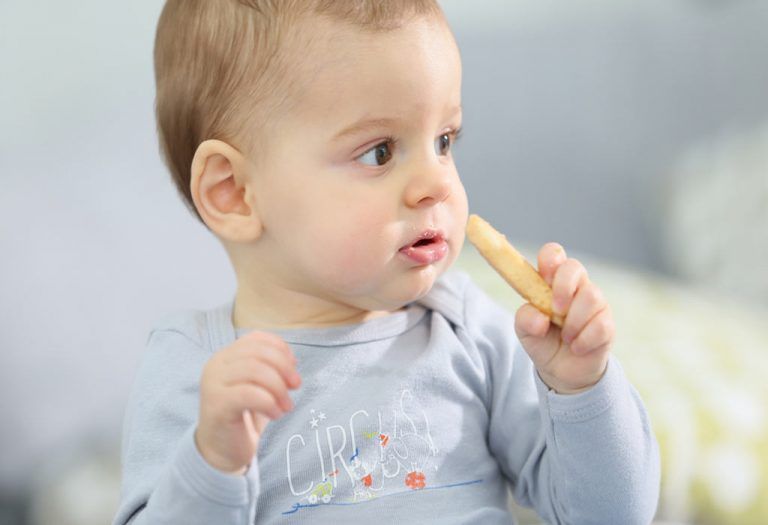 Due to the presence of cheese in the recipe, the omelet is not bland, so parents will also like it.
Due to the presence of cheese in the recipe, the omelet is not bland, so parents will also like it.
Oranges are citrus fruits that we see on the shelves of shops all year round.
Fish baked in an omelette like in a kindergarten - a dish that is absolutely predictable in taste.
So many parents experience their children's dislike for vegetables, and this is often frustrating.
Adding another great soup to my kindergarten recipe box. Bean dishes are always hearty and healthy, and green peas, moreover, not only cook quickly, but also please with their beautiful green color.
After a year, the children's menu expands significantly and one of the first dishes that are introduced into the diet of babies is puree soups.
Pretty satisfying, thanks to potatoes, and fresh, thanks to cucumber, the salad will surely appeal to children.
In winter and spring, it is recommended to introduce dried fruits into the children's diet, since fresh fruits at this time of the year contain much less vitamins and nutrients.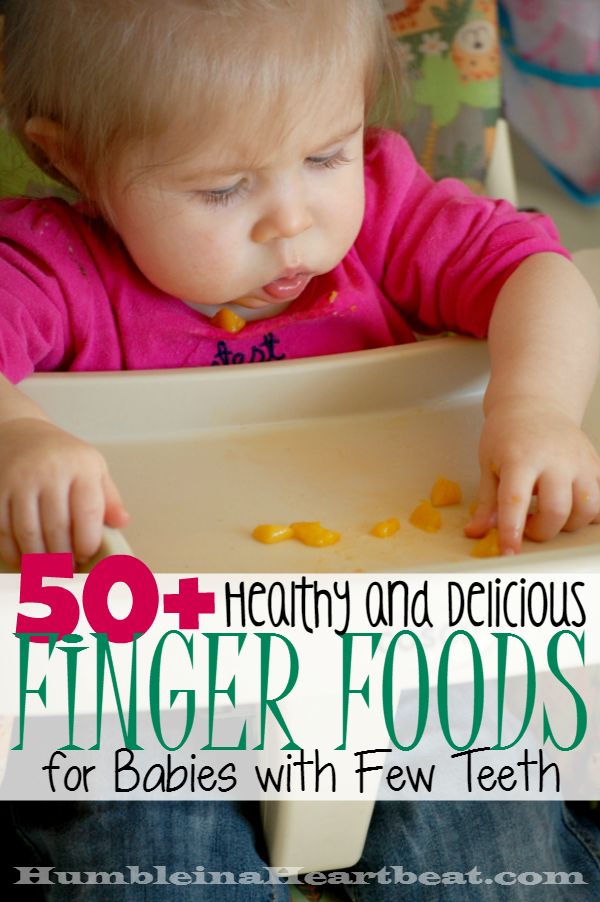
Another salad in the piggy bank of recipes according to the kindergarten's technological maps.
From the age of about a year, fruits are introduced into the child's diet. Of course, if a child has few teeth and still cannot chew pieces, then we can only talk about fruit purees.
I would never have thought that rabbit meatballs like in kindergarten can be so tender and juicy!
Carrots stewed with rice and prunes, like in kindergarten - hearty, tasty, slightly sweet and, thanks to prunes, very fragrant dish.
Almost everyone remembers this pasta and cottage cheese casserole, it was a frequent guest on the tables in many kindergartens.
Boiled pasta baked with eggs, as in kindergarten, is suitable not only for a children's table, but can also be an interesting side dish for people on a diet (suitable for diets No. 3, No. 4c, diets No. 6, 7, 8, 10 , 11 and 15).
Soup-puree from zucchini, like in kindergarten, turns out to be very tender, calm, pleasant to the taste.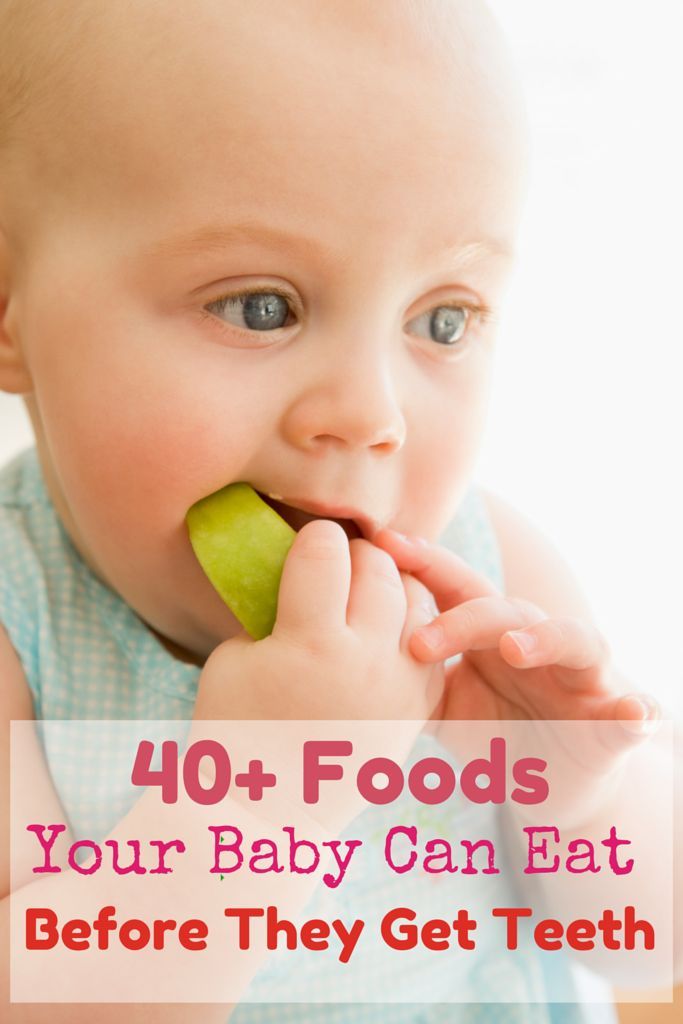
How many children love cauliflower? I don't know them :) Usually, the very smell of boiled cauliflower already drives the children out of the kitchen, but not in this case.
Fish patties with vegetables baked like in kindergarten - quite an interesting dish.
Delicious and fragrant garnish with a golden crust is potatoes baked in sour cream, like in a kindergarten.
Now even small children know that it is healthy to eat vegetables, but few people realize that the color of these vegetables is also of great importance.
Delicious, hearty and healthy chopped chicken fillet with scrambled eggs and vegetables, cooked like in a kindergarten, the whole family will like it.
Using the most common and familiar products in every kitchen, let's cook krupenik like in kindergarten.
Children are often reluctant to eat in kindergarten. The food is unusual, not homemade, “strange”.
But it often happens the other way around: “I want it like in a kindergarten!”.

